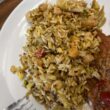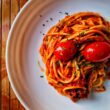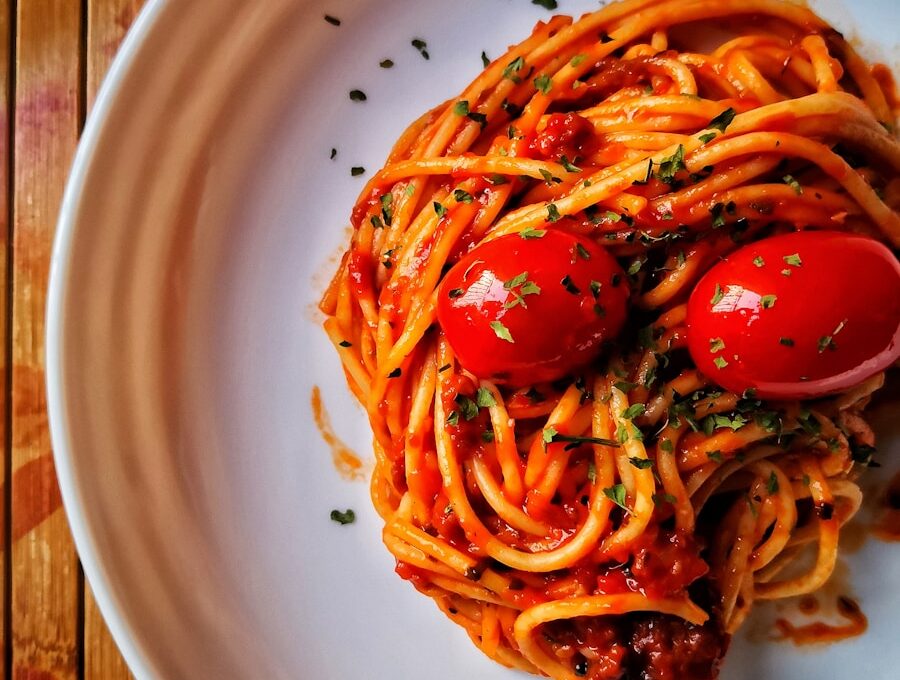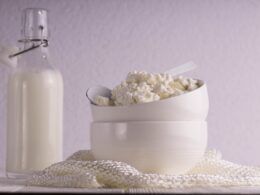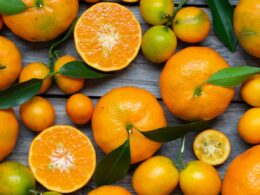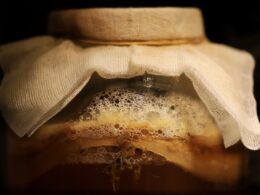This post is all about Dried Pasta in the US.
Have you ever thought about whether the food you’re eating is making you sick? Unless something is wrong with us, we don’t really pay attention to them. Like me, I’ve driven myself crazy trying to figure this out because I’ve been having stomach problems ever since I moved to the US.
I went to see my doctor, but he said I was fine and gave me heartburn pills. However, I’m on a mission to find out if what I’m eating is making me bloated.
Why are there so many extra things in the food? Isn’t fresh food thought to be the best? Why can’t we eat it without anything added to it? I’m going to start my research with pasta, which is my favorite food. I used to really enjoy pasta, but now it makes me feel bad and bulky. So….
I went to Walmart to look at all the different kinds of pasta and find the ones with the fewest ingredients.
Click here to jump to the list.
What are enriched foods?
Enriched foods are typically fortified with additional nutrients that may be lacking in the original product. It’s important to choose whole grain options when possible for added fiber and nutrients. Additionally, reading ingredient labels carefully can help you make the healthiest choice for your body.
What is the difference between fortified food and enriched food?
Fortified foods have extra nutrients that aren’t naturally in the food. Enriched foods, on the other hand, have nutrients that were lost during cooking and have man-made versions put back in. Vitamin D is often added to milk, and folic acid and iron may be added back to foods like wheat bread that have already been fortified. Fortification is meant to make food healthier, while enrichment is meant to replace nutrients that have been lost.
Is enriched food good for you?
It depends. For kids and teens who might not get enough nutrients from food on their own, fortified and improved foods can help them meet their daily needs. But there are worries that some vitamins could be too much, especially for kids, because some foods have them added to them.
Some foods that have been enriched are highly processed and may have a lot of sugar, salt, and fat, which makes them less healthy. If you are pregnant, older, or on a special diet, you should be especially careful with enriched foods and pay close attention to the amount of nutrients they contain. Outdated daily value rules and advice that don’t agree with each other from different groups make the problem even more complicated.
What are examples of enriched foods?
Some examples of enriched foods are sugar-free candy, low-sodium canned veggies, fat-free chips, milk with added vitamin D, enriched grains with folic acid, and fruit drinks with added calcium. Nutrients that were lost during processing are added to enriched foods, while nutrients that were not there before are added to enriched foods. Some foods that are fortified are salt, fruit juice, soy milk, bread, eggs, breakfast cereals, and yogurt. These foods have extra nutrients like folic acid, vitamin A, vitamin B6, vitamin B12, calcium, vitamin D, vitamin E, iron, and iodine added to them.
Vocabulary:
- Semolina (Wheat): Semolina is a rough flour made from durum wheat that is often used to make corn and pasta. Most people can eat it without any problems, but people who are sensitive to gluten or have celiac disease should stay away from it.
- Durum Wheat Flour: This is a type of wheat flour made from durum wheat. It has a lot of protein and is used to make bread, pasta, and rice. For most people, it’s not bad unless they can’t handle gluten or have celiac disease.
- Vitamin B3 (Niacin): Niacin is a B vitamin that dissolves in water and helps the body make energy and use it. It’s good for you in small amounts and not bad unless you take very large amounts without a doctor’s care.
- Mineral iron (Ferrous Sulfate): Iron is needed to make hemoglobin, which is what moves oxygen around the body in red blood cells. Ferrous sulfate is a popular form of iron that is added to food. In the right amounts, it’s not bad and helps keep you from getting iron-deficiency anemia.
- Vitamin B1, also known as Thiamine Mononitrate, is a B vitamin that helps the body turn food into energy. This is a steady form of thiamine that is added to food to make it healthier. It isn’t bad and is good for your health in general.
- Vitamin B2 (Riboflavin): Riboflavin is another B vitamin that helps your body make energy and keep your skin and eyes healthy. Most people can handle it, and their bodies need it to do many things.
- Folic Acid: Folic acid is a man-made form of folate, a B vitamin that helps make DNA and help cells grow. It’s very important, especially during pregnancy, to keep babies from being born with problems in the neural tube. Folic acid isn’t bad in and of itself, but taking too much of it from vitamins can be bad for your health, so it’s important to stick to the standards.
10 Best Dried Pasta in the US, from Most to Least Additives
1. Barilla
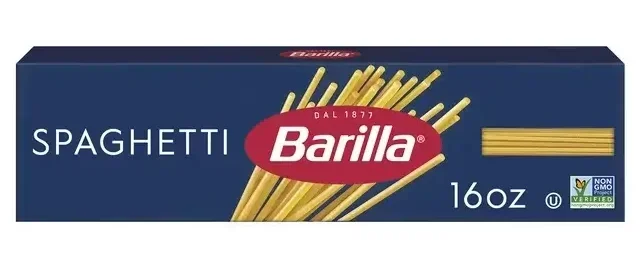
Many people like Barilla spaghetti because it tastes great and is made with good ingredients like durum wheat flour, but the fact that it has a large number of additives is concerning. Specifically, why does the Barilla spaghetti from Europe not contain all of these additives?
The ingredient list for this specific brand, for example, only includes two of the seven that are available in the US, according to Sainbury’s website.
Looking for a healthy Barilla spaghetti try the Whole Grain Spaghetti.
Ingredients: SEMOLINA (WHEAT), DURUM WHEAT FLOUR. VITAMINS/MINERALS: VITAMIN B3 (NIACIN), IRON (FERROUS SULFATE), VITAMIN B1 (THIAMINE MONONITRATE), VITAMIN B2 (RIBOFLAVIN), FOLIC ACID.
2. Skinner Spaghetti
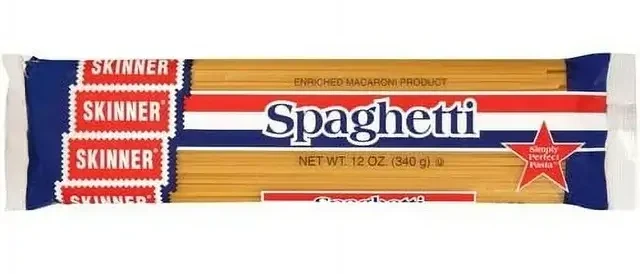
According to their website, this brand is only sold at Kroger and Walmart. Skinner is Texa’s most popular pasta brand, and its smooth texture means it stays moist with sauces. Also, they make it clear to all their customers that their products are verified by the Non-GMO Project, and each product contains their logo as proof.
Skinner Spaghetti has been making pasta for more than one hundred years, so it is a good choice for people who want a basic and tasty meal. Which makes me wonder when they started making this enriched pasta. Read more about enriched and non-enriched pasta.
Ingredients: SEMOLINA (WHEAT), DURUM FLOUR (WHEAT), NIACIN, IRON (FERROUS SULFATE), THIAMIN MONONITRATE, RIBOFLAVIN, FOLIC ACID.
3. Ronzoni
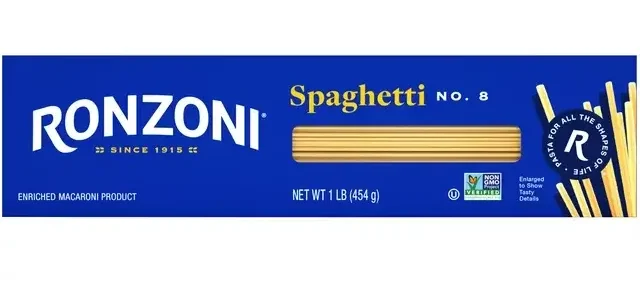
Ronzoni has an interesting history. It was started by an Italian immigrant who brought his skills at making pasta to the United States.
People know this brand for being versatile and always making perfectly al dente pasta. However, it’s important to note that Ronzoni has been ranked lower in some taste tests, such as the one done by Today.com because it tastes a little sweeter than other brands.
Another interesting thing about Ronzoni is that it is enriched, which means it has extra nutrients like iron and B vitamins.
But do we really need all that? It can be a good thing for people who want to get more nutrients from their pasta but why? when you can get them in the food too without the need to add them.
Ingredients: DURUM WHEAT SEMOLINA, DURUM WHEAT FLOUR, NIACIN, FERROUS SULFATE (IRON), THIAMIN MONONITRATE, RIBOFLAVIN, FOLIC ACID.
4. American Beauty
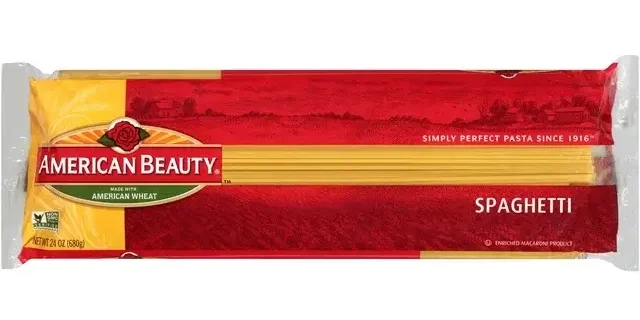
American Beauty dried pasta is a well-known brand that is known for having a lot of different shapes and sizes of pasta.
This makes it a good choice for a lot of different pasta recipes. Durum wheat semolina, water, and additions like enrichment nutrients, stabilizers, anti-caking agents, emulsifiers, or antioxidants are some of the things that are usually in it.
Some people may be worried about the chemicals used in its production, especially those who want a more natural or additive-free diet, even though it is liked for being easy to use, cheap, and versatile in the kitchen.
It’s not a surprise, though, since it was made by the same company that made Skinner.
Ingredients: SEMOLINA (WHEAT), DURUM FLOUR (WHEAT), NIACIN, FERROUS SULFATE (IRON), THIAMIN MONONITRATE, RIBOFLAVIN, FOLIC ACID.
5. Great Value
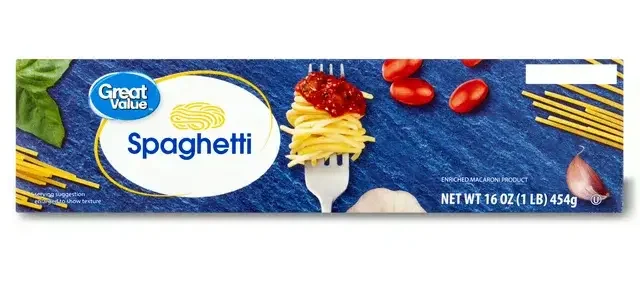
It’s cheap to buy Great Value spaghetti, and it still tastes good and fills you up. But just because something tastes good doesn’t mean it’s good for you.
Great Value spaghetti isn’t as well-known as some other brands, but it can still be a good choice for people who want to save money without giving up taste.
But be aware that it’s an enriched pasta.
Ingredients: SEMOLINA, NIACIN, FERROUS SULFATE (IRON), THIAMINE MONONITRATE, RIBOFLAVIN, FOLIC ACID.
6. De Cecco
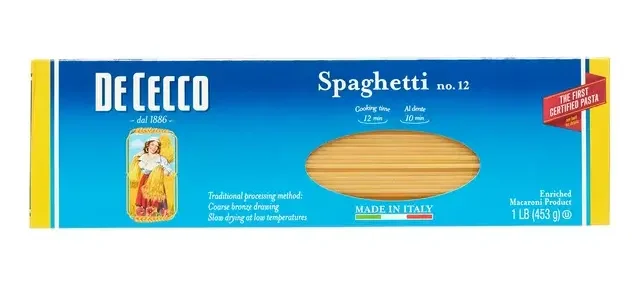
De Cecco spaghetti is a great choice for people who want to take their pasta meals to the next level because it is made with high-quality products and traditional Italian techniques.
Due to its excellent taste and texture, de Cecco spaghetti is a favorite among both chefs and home cooks.
However, for some reason, De Cecco is another brand that doesn’t have any additives in Europe. Reviewers from all over the world say that De Cecco spaghetti is the best pasta, which I think is true. But, not with the additives.
Ingredients: DURUM WHEAT SEMOLINA, VITAMINS (NIACIN, THIAMINE MONONITRATE, RIBOFLAVIN, FOLIC ACID), IRON (FERROUS LACTATE).
7. Goya
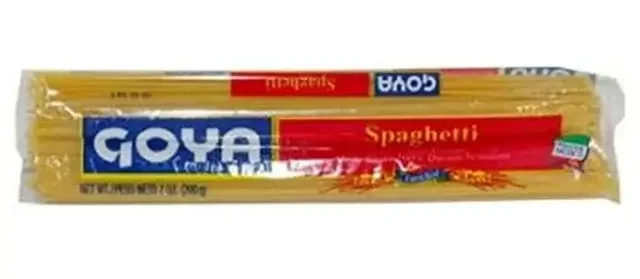
There is something special about Goya spaghetti that makes it stand out for pasta lovers who want to add delicious Hispanic tastes to their meals.
With its flavorful sauces and bright spices, Goya spaghetti goes well with a wide range of dishes, giving them a tasty Latin twist.
The ethnic diversity of Goya spaghetti makes the meal more enjoyable, but it’s also important to note that it’s a nutritious pasta. This means that it has extra nutrients like iron, folic acid, and B vitamins, which can help people who want to eat more vegetables through their pasta alternatives. But some choose not to eat it because of it.
Ingredients: DURUM SEMOLINA ENRICHED WITH NIACIN, IRON, THIAMIN, RIBOFLAVIN AND FOLIC ACID.
8. Mueller’s

For many years, Mueller’s spaghetti has been a family favorite because it is of high quality, tastes great, and can be used in many ways. The fact that it tastes good with a lot of different sauces and greens and always makes dinner more fun makes a lot of people eat it every day.
You can tell the difference between Mueller’s spaghetti from the US and any other brand from Europe if you put them next to each other. In Europe, people want more natural goods, so rules often limit the number of chemicals and ingredient lists. There are more chemicals that can be used in the USA, though, so people with different food needs and tastes can get what they want. Some of these are food flavors and nutrients that keep food fresh but are not necessary for all.
Ingredients: SEMOLINA, NIACIN, FERROUS SULFATE (IRON), THIAMIN MONONITRATE, RIBOFLAVIN, FOLIC ACID.
9. Iberia
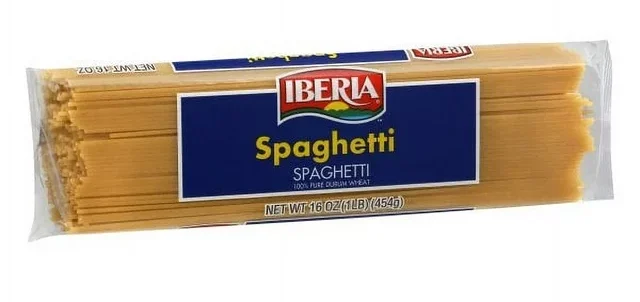
Let’s take a quick look at Iberia—it’s very interesting! Are you sure it only has two things in it?
There are no additives, just pure simplicity. Iberia spaghetti stands out because of its great taste and high-quality products, giving you a real taste of Hispanic food. When you cook with Iberia spaghetti, you can enjoy the tastes of Latin America in the comfort of your own home, knowing that you’re only using two natural, pure ingredients.
Ingredients: DURUM WHEAT SEMOLINA AND DURUM FLOUR.
10. Rao’s
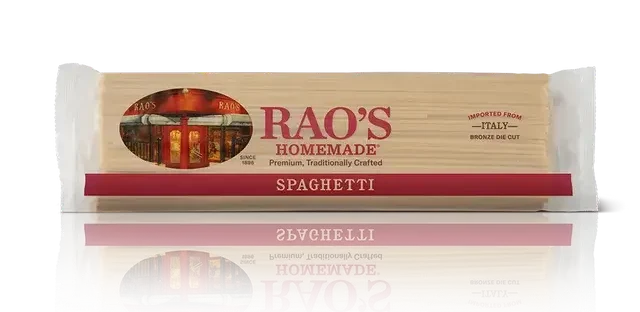
What do you think about Rao’s Spaghetti? Rao’s is known as a high-end choice because it uses only the best ingredients and true Italian tastes.
It’s interesting that Rao’s pasta makes a big claim: it only has one ingredient. Because Rao’s is dedicated to quality and simplicity, every bite of his spaghetti tastes just like traditional Italian pasta. This makes it a top choice for food lovers who want original flavors.
It may be more expensive than other brands, but Rao’s pasta is worth the extra money for people who want to make their home-cooked meals taste more gourmet without skimping on quality.
Ingredients: DURUM WHEAT SEMOLINA. CONTAINS: WHEAT.
This blog is only meant to give you information about the brands I found at Walmart and what they’re made of. From most to least ingredients.
FAQ:
Difference between Semolina Wheat vs. Durum Flour
Although durum wheat is used to make semolina, durum flour is a finer powder made from semolina that has been ground even more. The protein and gluten content of both semolina and durum flour is high, but semolina feels thicker and grainier. It’s easier to work with durum flour to make a smoother dough for pasta, but semolina is usually used to make hard pastas that stay together when they’re cooked. However, both semolina and durum flour are made from durum wheat, durum flour is smoother than semolina.
Why does the USA put additives in pasta?
In the US, chemicals are added to enriched pasta because nutrients are lost during production, and fake powders are added to make it stronger. This makes whole-grain pasta taste like cardboard. It only adds back a few of the nutrients that were lost during heavy processing.
Conclusion:
It is important to be mindful of the ingredients in pasta products, especially in the US where additives are commonly used. Opting for whole-grain or homemade pasta can be a healthier and more flavorful choice compared to enriched varieties.
This post was all about dried Pasta in the US, from most to least additives.


